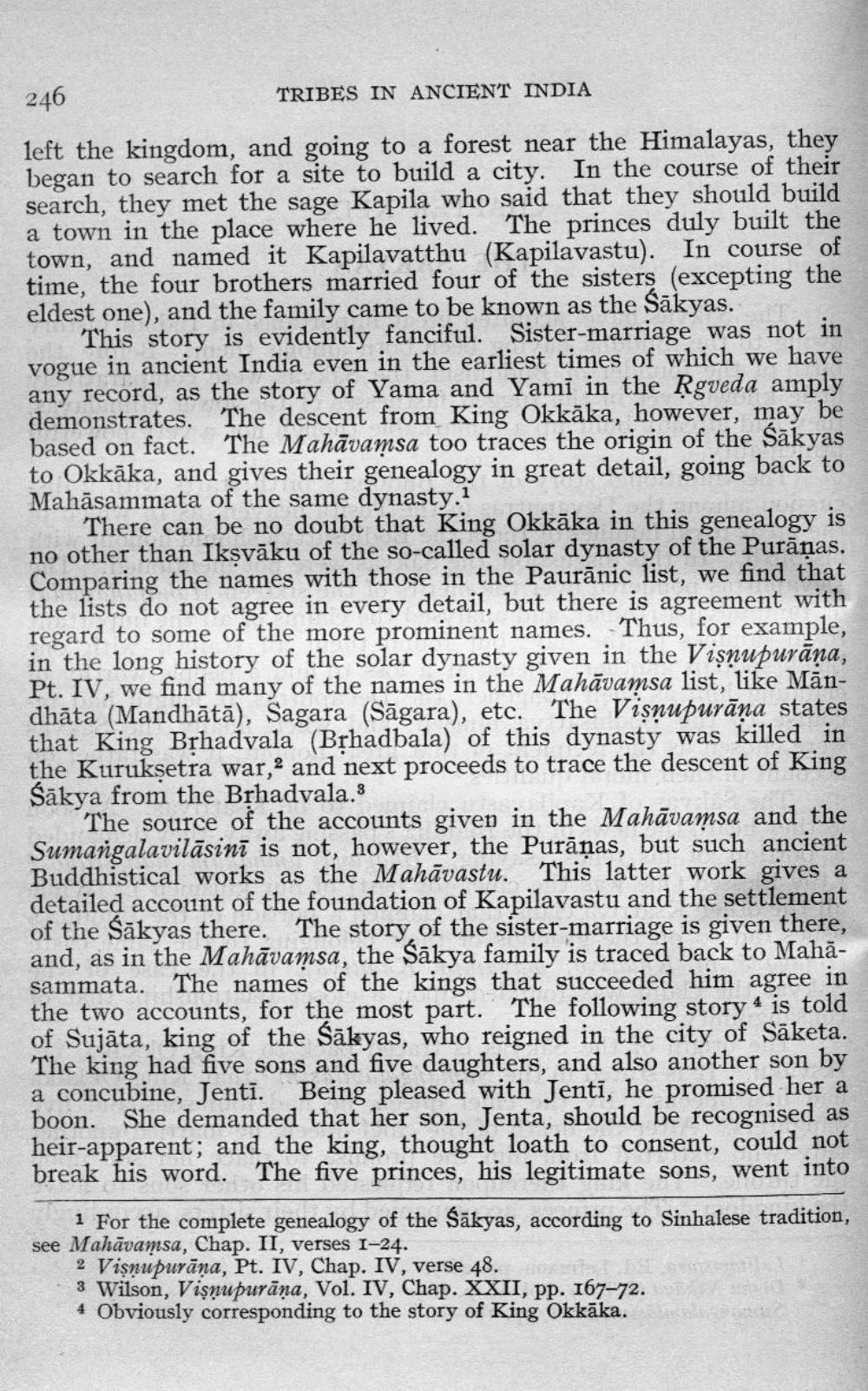________________
246
TRIBES IN ANCIENT INDIA left the kingdom, and going to a forest near the Himalayas, they began to search for a site to build a city. In the course of their search, they met the sage Kapila who said that they should build a town in the place where he lived. The princes duly built the town, and named it Kapilavatthu (Kapilavastu). In course of time, the four brothers married four of the sisters (excepting the eldest one), and the family came to be known as the Sākyas.
This story is evidently fanciful. Sister-marriage was not in vogue in ancient India even in the earliest times of which we have any record, as the story of Yama and Yami in the Rgveda amply demonstrates. The descent from King Okkāka, however, may be based on fact. The Mahāvamsa too traces the origin of the Sākyas to Okkāka, and gives their genealogy in great detail, going back to Mahāsammata of the same dynasty.1
There can be no doubt that King Okkāka in this genealogy is no other than Ikşvāku of the so-called solar dynasty of the Purāņas. Comparing the names with those in the Paurānic list, we find that the lists do not agree in every detail, but there is agreement with regard to some of the more prominent names. Thus, for example, in the long history of the solar dynasty given in the Vişnupurāna, Pt. IV, we find many of the names in the Mahāvamsa list, like Mandhāta (Mandhātā), Sagara (Sāgara), etc. The Visnupurāna states that King Bịhadvala (Bịhadbala) of this dynasty was killed in the Kuruksetra war, 2 and next proceeds to trace the descent of King Sākya from the Brhadvala.3
The source of the accounts given in the Mahāvamsa and the Sumangalavilāsinī is not, however, the Purāņas, but such ancient Buddhistical works as the Mahāvastu. This latter work gives a detailed account of the foundation of Kapilavastu and the settlement of the sākyas there. The story of the sister-marriage is given there, and, as in the Mahāvamsa, the Sākya family is traced back to Mahāsammata. The names of the kings that succeeded him agree in the two accounts, for the most part. The following story 4 is told of Sujāta, king of the Sākyas, who reigned in the city of Säketa The king had five sons and five daughters, and also another son by a concubine, Jenti. Being pleased with Jentī, he promised her a boon. She demanded that her son, Jenta, should be recognised as heir-apparent; and the king, thought loath to consent, could not break his word. The five princes, his legitimate sons, went into
1 For the complete genealogy of the Sākyas, according to Sinhalese tradition, see Mahāvamsa, Chap. II, verses 1-24.
2 Vişnupurāņa, Pt. IV, Chap. IV, verse 48. 3 Wilson, Visnupurāna, Vol. IV, Chap. XXII, pp. 167-72. 4 Obviously corresponding to the story of King Okkāka.




